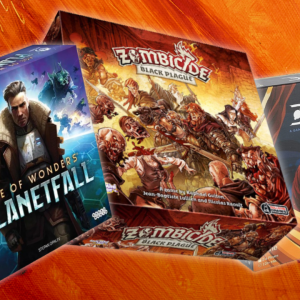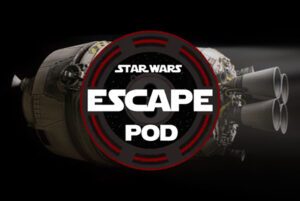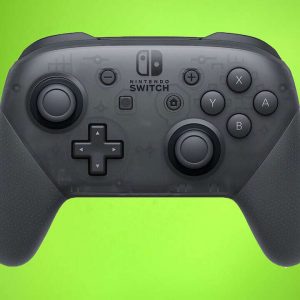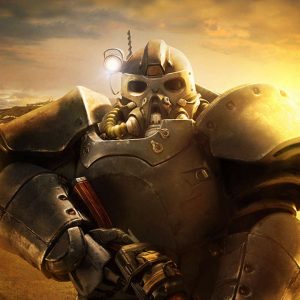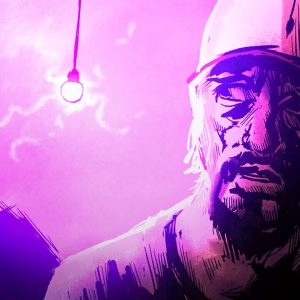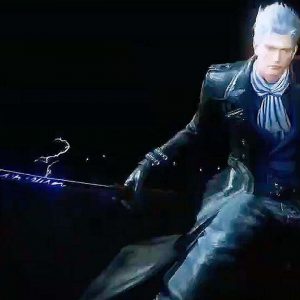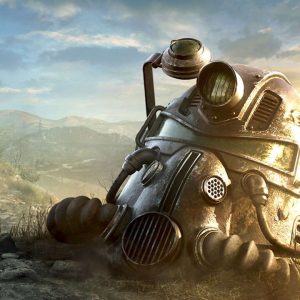[ad_1]
Everyone’s talking about the Auto Battler genre, but what’s it all about?
The last few years have been all about Battle Royales, before that, Hero Shooters. Further back yet, MOBAs, Roguelikes, survival games, crafting games, CoD-style shooters, instrument-peripheral-based music games, the list goes on until we reach 1998, where the fad was ‘well-constructed games featuring high-quality storytelling and gameplay’.
Maybe that fad will return, but it’s not coming this year, because in 2019 we’ve got Auto Battlers like Dota Underlords, Teamfight Tactics and Auto Chess.
What am I playing?
Auto Battlers, or Auto Chesses — as they would be known if we stuck with calling it Auto Chess as a genre — are relatively new in the gaming world, entering the scene this year by way of Drodo’s custom map on the Dota 2 Arcade, where it single-handedly reminded non-Dota players that Dota 2 exists.
As a concept it’s quite a bit older, however, hearkening back to Warcraft 3 custom maps like Pokemon Defense, which took Tower Defense and turned it into a hero-based team management game.
The Dota 2 custom map is called Auto Chess largely for the board the game takes place on — an eight-by-eight battlefield upon which you place your team of heroes during a preparation phase. The Auto Battler name comes from what happens next — your heroes duke it out against another team, and the results are determined without any input from you. Once the battle phase begins, the fighting is automatic — hence Auto Battler.
How am I playing it?
The basics are simple — at the start of your game, you select a hero, you place the hero on the game board, and then it battles on your behalf. If you win your battle, you get a bit of extra gold and everything is cool. If you lose, you lose a bit of health. There are seven other players in the game, and each of them has their own heroes, game boards and health totals. The winner is the last team standing.
There’s a fly in the ointment, however, and it’s critical to what makes an Auto Battler interesting. The heroes you select for your team are offered to you largely at random. You aren’t guaranteed any one particular hero. And worse still, the heroes you’re getting? They come from the same pool of heroes that the other seven teams are purchasing from. Using Dota Underlords as an example, if you want to buy a Drow Ranger, and the other seven people playing with you want to also buy a Drow Ranger, the odds of one of you missing out are quite high.
Better still, you don’t want just one Drow Ranger. You can combine three of her into a single two-star variant which is more powerful. And you can combine three two-stars into a single three-star. So, provided it works for your team composition, you actually want nine Drow Rangers.
She’ll never win you a match on her lonesome either. She needs to have friends, and deciding which friends are best for her is far from simple. She’s a Hunter, so if you can secure two more Hunters, all three of them will get class synergy. She’s “Heartless”, so if you can snag another Heartless hero they’ll both receive racial synergy. And as a character, her ability is a passive that causes all units adjacent to her to receive an attack speed bonus, so you need to surround her with ranged units to get the most out of her.
That’s just one possible hero you could put in your team, and there are dozens of them. Each other hero requires similar consideration on your part — and because the heroes you can purchase are offered at random, you’ll often have to make compromises. Tidehunter will give you the class synergy you need, but he doesn’t attack from the backlines so you won’t get much out of Drow Ranger’s passive buff with him. Shadow Shaman will stay put, but as a Troll Shaman won’t give you any synergies at all.
Econ 101
You didn’t think it stopped there, did you? Because you still need to take your economy into account. After the first few rounds, you get five gold per round until you’re knocked out or you win. Drow Ranger costs one gold, so grabbing nine of her won’t even crack the double digits. But Tidehunter clocks in at a whopping five gold per piece, so scoring a three-star version of him is very costly indeed.
You also get interest each turn, however, by reaching certain thresholds. If you’ve got 10 gold, you get one extra per turn. If you’ve got 50 gold in the bank, you get an extra five. There are also winning and losing streak bonuses, and depending on which game you’re playing there are a handful of other ways to make extra cash as well.
You primarily spend your gold on heroes, but money can also be spent on levels as well. You can only deploy heroes based on your current total level. At level eight, you can have eight heroes on the board. This isn’t a huge deal early on, because you earn XP each round and you can make it to around level five at a decent pace, but the amount of XP required per level increases significantly, so in the later rounds the only viable way to level up is to spend some cash on extra XP.
You can also spend gold rerolling the heroes available to you. Auto Battlers present you (and everyone else playing) with five heroes to choose from each round, but if you spend some gold you’ll cycle through to another five. The challenge is knowing when to cycle through, when to spend money on heroes and when to save your money to maximise your interest.
Layers upon Layers
Once you’ve mastered the economy, the next trick is getting a handle on items. Every five rounds after the 10th will pit you against an AI wave, a sort of gear check round to test whether your team composition is up to the task. If you’re losing these rounds, there’s something wrong — though if you’re still beating your human opponents, then there’s no need to worry too much.
“
Positioning is probably the hardest factor to get a handle on in the Auto Battler realm, because it’s not as immediately obvious as synergies, economies or items.
At the end of each AI round you will (ideally) have some new items, and depending on which game you’re playing you can assign those items to your heroes. Knowing which items to put where can be tricky, but correct itemisation can lead to some crazy stuff — like Yasuo/Sorcerers in Teamfight Tactics being so strong they had to nerf Yasuo and the item he was using.
The other thing you need to keep in mind is your positioning on the game board. Yasuo is only any good if he starts a round with no other heroes adjacent — if he does this, he gets a massive shield. Drow Ranger is best utilised when surrounded by other heroes, and she’s pretty useless if left on her lonesome. Assassins will jump into your backline from the start to rip through your team, which means you need to position your heroes in such a way as to prevent that from wiping out all your glass cannons.
Positioning is probably the hardest factor to get a handle on in the Auto Battler realm, because it’s not as immediately obvious as synergies, economies or items. But spending time on your positioning can do wonders for your game — I have literally won rounds and eventually matches by switching two units on the board, and lost others that I would have won if I’d moved them.
A Tenuous Link
If you think about it, Auto Battlers have quite a bit in common with Battle Royale games. Both genres are Last Person Standing, both feature direct battles with your opponents, both put a large emphasis on positioning and general game knowledge as key factors in any victory. And both involve a loot phase where what you get is largely random.
And for a lot of players in both genres, that loot phase is crucial to their enjoyment.
“
The loot phase in an Auto Battler is essentially a gacha game… except the currency being used is fictional.
The loot phase in an Auto Battler is essentially a gacha game — the random character mechanism dominating dozens of mobile games worldwide — except the currency being used is fictional. So there’s no harm done in cycling through for the perfect hero to add to your team — except for the harm done to your in-game economy, of course.
The desire to cycle one more time to find the last piece of your team’s puzzle is the same one that drives some people to chase after the supply drop that just landed in PUBG — the mythical idea of greener grass.
Just as sometimes it pays off to grab the supply drop in Battle Royale games, dumping all your gold chasing a single piece can sometimes pay off in Auto Battlers too. But more often than not it’s an illusion — a short term fix, while long term you’ll find yourself unable to recover from the blow to your cash flow.
Real Nice Guys
At their core, Auto Battlers are about RNG management. RNG — Random Number Generators — is the catch-all term used to describe any randomness in games. Any time a coin is flipped, dice are rolled or a card is drawn, RNG is involved. Hot-dropping in Apex Legends and finding only a Mozambique — that’s RNG at play. Somehow missing that 95% chance to hit in XCOM? RNG did that. Rolling Need on the sword of your dreams only to see it inexplicably sent to your Guild’s Hunter? RNG.
We often associate RNG with bad things, because when things are going our way we attribute it to our own skill. But RNG plays a part in many games, and knowing what is random and what isn’t can — and will — change your enjoyment of those games. Managing and mitigating the impact RNG has on you in a game allows you to have a more direct impact on the outcome, and it starts with recognising what is random in the first place.
Doing so in Auto Battlers is key – you’re working out how to manage the odds and then use that information to your advantage.
RNG might have boned you by not giving you the hero you wanted, but it gave you some other heroes instead. You can grab those, and bide your time until the hero you want appears. Or you could use the new heroes to try for an alternate strategy, and build your way to something different. There are dozens of heroes, and there’s not one ‘correct’ strategy, so the randomness can actually help you try something new.
Circus Acts
In this way an Auto Battler becomes akin to juggling, a frantic effort to keep all the balls in the air. You have all these resources at your disposal, and you need to utilise them to carve out your path to victory. Money, heroes, time and your life-pool are all resources you can expend to secure a win, and managing all of those while seven other people are doing the same is extremely exhilarating. Emerging the victor is rewarding because it means you beat not just the other seven players, but the odds themselves.
“
Money, heroes, time and your life-pool are all resources you can expend to secure a win, and managing all of those while seven other people are doing the same is extremely exhilarating.
Winning at all is never guaranteed. It’s not like Hearthstone where you face off against an opponent in a head-to-head battle — there are seven other teams vying for the same outcome you are.
So if you prove that you’re a better juggler than the others, there’s a real sense of achievement. And if you’re paying enough attention each game, even a loss isn’t a huge downer, because you’ll know where you went wrong and, ideally, how to fix it next time.
This is another area where Auto Battlers are similar to Battle Royale games. The competitive among us often have a bit of a Ricky Bobby philosophy that doesn’t really work for large scale competitive games. If you’re not first, you’re not actually last in an Auto Battler, because a top three win is still an above average effort.
Just as you can’t account for the circle’s placement when you reach the business end of a Battle Royale, it’s not your fault if another player keeps getting exactly what they need to make their team composition work. But by the same token, if you walk away from a second place finish without learning something, then you might be a loser after all.
The Auto Battler Auto Battle
There are three key Auto Battlers in the wild right now — Dota Underlords, Teamfight Tactics and Auto Chess — and the rad thing about all three is that they’re free. You can jump in and play any of them, and you don’t have to put any money down. Let’s go through them in order of easiest to hardest to understand.
Dota Underlords
It’s true, Valve still makes games. Dota Underlords is far and away the easiest of the Auto Battlers to get into, a small irony seeing how Dota 2 requires hundreds of hours just to get to a point where you would describe yourself as terrible.
“
Dota Underlords is far and away the easiest of the Auto Battlers to get into, a small irony seeing how Dota 2 requires hundreds of hours just to get to a point where you would describe yourself as terrible.
For starters, it has bot matches with multiple difficulty levels. Better still, while a regular game in an Auto Battler takes place on a strict timer, bot matches in Underlords can be set to any pace you wish — you can pause between rounds, and even play a match where you specifically dictate when the next round begins.
It’s also available on both mobile and PC, and you can switch between both versions quickly and easily. You can start a game on PC and finish it on your phone, in case you need to… clean the bathroom mid-game.
Couple that with a fantastic UI which presents you with oodles of information direct from the outset, and Underlords is a novice Auto Battler’s dream. You can see all your team composition’s synergies at a quick and clear glance with the push of a button, watch your team’s DPS or adjust your team’s items quickly and easily.
The way Underlords does items is unique to it as well — each hero can only have a single item, and you can hot-swap them to other heroes whenever you want (in between rounds). You’re also guaranteed an item at the end of each creep wave — even if you lose the wave — which incentivises you to win, but doesn’t punish you if you don’t.
The downside of Underlords is that it’s based heavily off an old build of the Auto Chess custom map, which means it’s not as complex as some people would like. There’s a meta called “Open Fort” which involves losing on purpose for rounds on end until your economy is juiced to the gills, after which you spend big on expensive heroes before others can afford them. This is effective in Underlords because the game lacks ways to punish early game losses, and if the NBA has taught us anything it’s that losing on purpose is anti-competitive and boring as hell.
You can grab Dota Underlords direct from Steam, or from the Google Play and iTunes stores.
Teamfight Tactics
It’s true, Riot Games still makes games. Riot’s League of Legends is one of the most popular games in the world, so it makes sense that Teamfight Tactics (TFT) would be immensely popular as well.
“
TFT… does away with the eight-by-eight chessboard, replacing it with a hexagonal grid of six by seven, changing up unit positioning significantly.
But with that in mind, if you’re not familiar with League of Legends you’ll struggle a little bit with Teamfight Tactics. The UI isn’t as friendly as Underlords’ is, and there are no bot matches — you’re jumping straight into the deep end against other players.
TFT does some interesting things to tweak the format, though, and it’s worth checking out. It does away with the eight-by-eight chessboard, replacing it with a hexagonal grid of six by seven, changing up unit positioning significantly.
The “Shared Draft” phase, where each player is transported to an area and given the opportunity to snag an extra hero is a brilliant catch-up mechanic, allowing the players with the lowest health pool first pick at the heroes available (and the items they carry). But if you don’t recognise League of Legends’ heroes on-sight you’ll have quite a bit of trouble, because there’s no way to identify them until after they’ve joined your team.
The itemisation in Teamfight Tactics is cool, awarding you a basic set of eight pieces, all of which can be combined into something more powerful. But you’re not guaranteed an item, which means you can lose some games even if everything else goes your way — the other player might have just gotten items when you didn’t, and it’s possible to make some near unstoppable heroes with the right combinations.
Still, for LoL fans this one is a sure thing, and Riot is working hard to improve it, rolling out patches regularly. You can play Teamfight Tactics by downloading the League of Legends launcher and clicking on the tab.
Auto Chess
At time of writing Auto Chess is a mobile-only affair, but Drodo — the creator of the original custom map and of this mobile game — says its PC client is coming soon.
“
Auto Chess features more heroes and more combinations than its competitors and has solved a lot of the issues the others have run into.
This is the most complex version of the genre, having spent the most time in the oven — only a few versions behind the custom map itself, Auto Chess features more heroes and more combinations than its competitors and has solved a lot of the issues the others have run into.
Open Fort doesn’t work because you can find yourself at too large a health deficit early on, the items are handed out using a weighted RNG system so that nobody is ever put at a huge deficit and the Divinity racial synergy provides a massive cooldown reduction buff — but you can’t have any other racial synergy active, which encourages a wide diversity of units.
It’s restricted to mobile only, though, and it’s absolutely the most complex of the three — a by-product of having the most unique items and heroes, really. That makes it tricky for a newcomer to learn, so you might wind up getting bodied a few times when you’re just starting out — and the starting out period lasts a lot longer than the other two.
But it’s also a little easier to do well, because the extra factors increase the impact RNG can have on the game, lowering the skill floor while simultaneously increasing the skill ceiling — more heroes means the pool for total heroes is larger, which means players will need to either damage their economy or be willing to try some less common team compositions.
Auto Chess is available by searching on the Google Play Store or iTunes Store now.
If you’re after the rawest version of Auto Chess, you could always download Dota 2 and load up the Custom Map itself, where the craze began. There’s quite a bit going on in the Custom Map version, with a new hero IO making itself useful by acting as a sort of ‘wild card’ for combinations, as well as team matches allowing you to share your health pool with another player and compete in tandem.
Like Battle Royales — like every game, really — Auto Battlers might not be for you. But the awesome thing about the genre is that the major variants are all free-to-play, supported entirely by cosmetics and available right now.
The only real way to find out if you’re an Auto Battler in your heart of hearts is to jump in and check them out. With any luck, you too can be the true Sage of Chess among these eight.

The text used to be “The truely Sage of Chesses among all this eight”, which is obviously even better.
Joab Gilroy is an Australian freelancer that specialises in competitive online games and chicken dinner acquisition. You can tweet at him here.
[ad_2]
Source link
